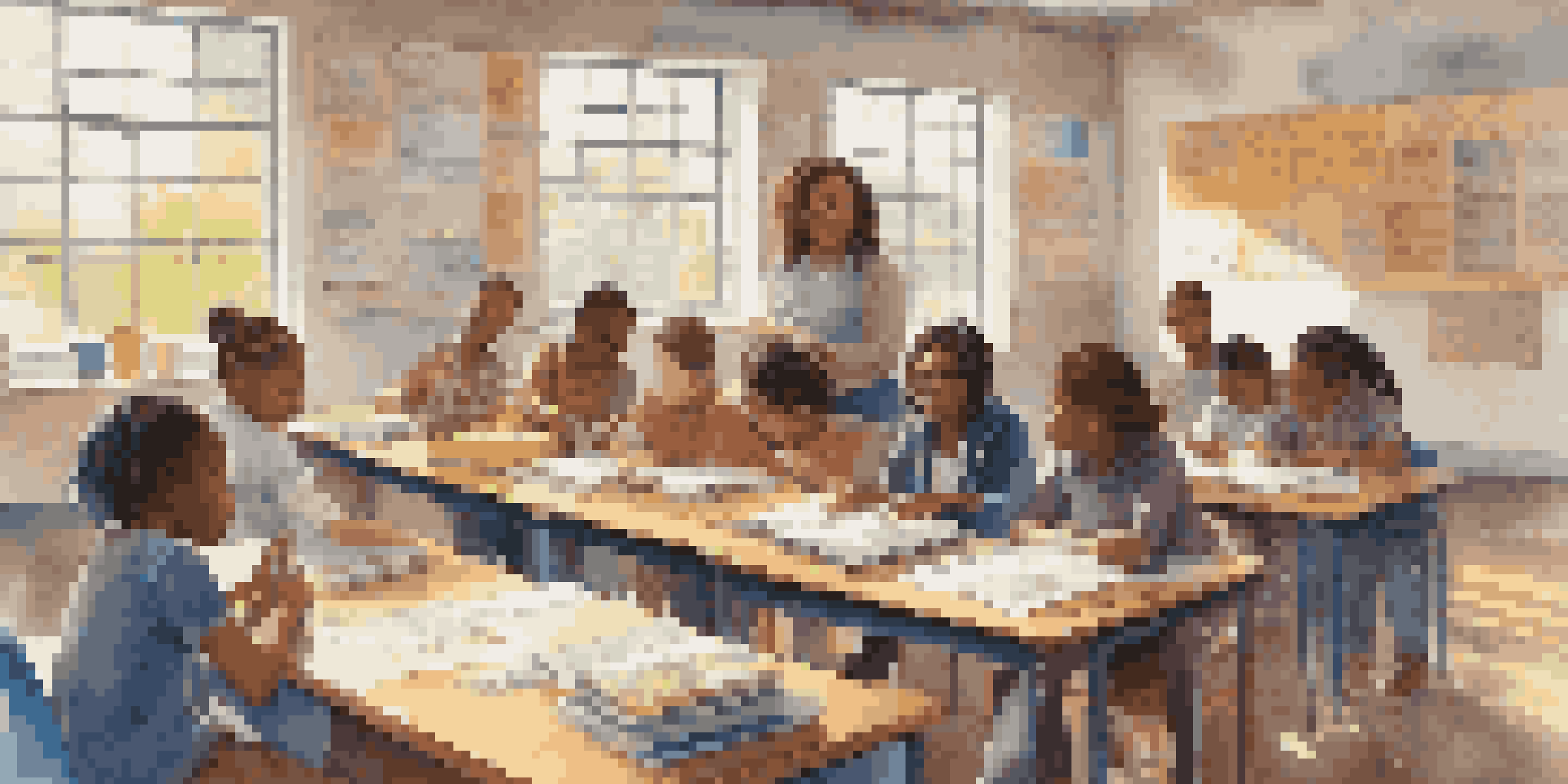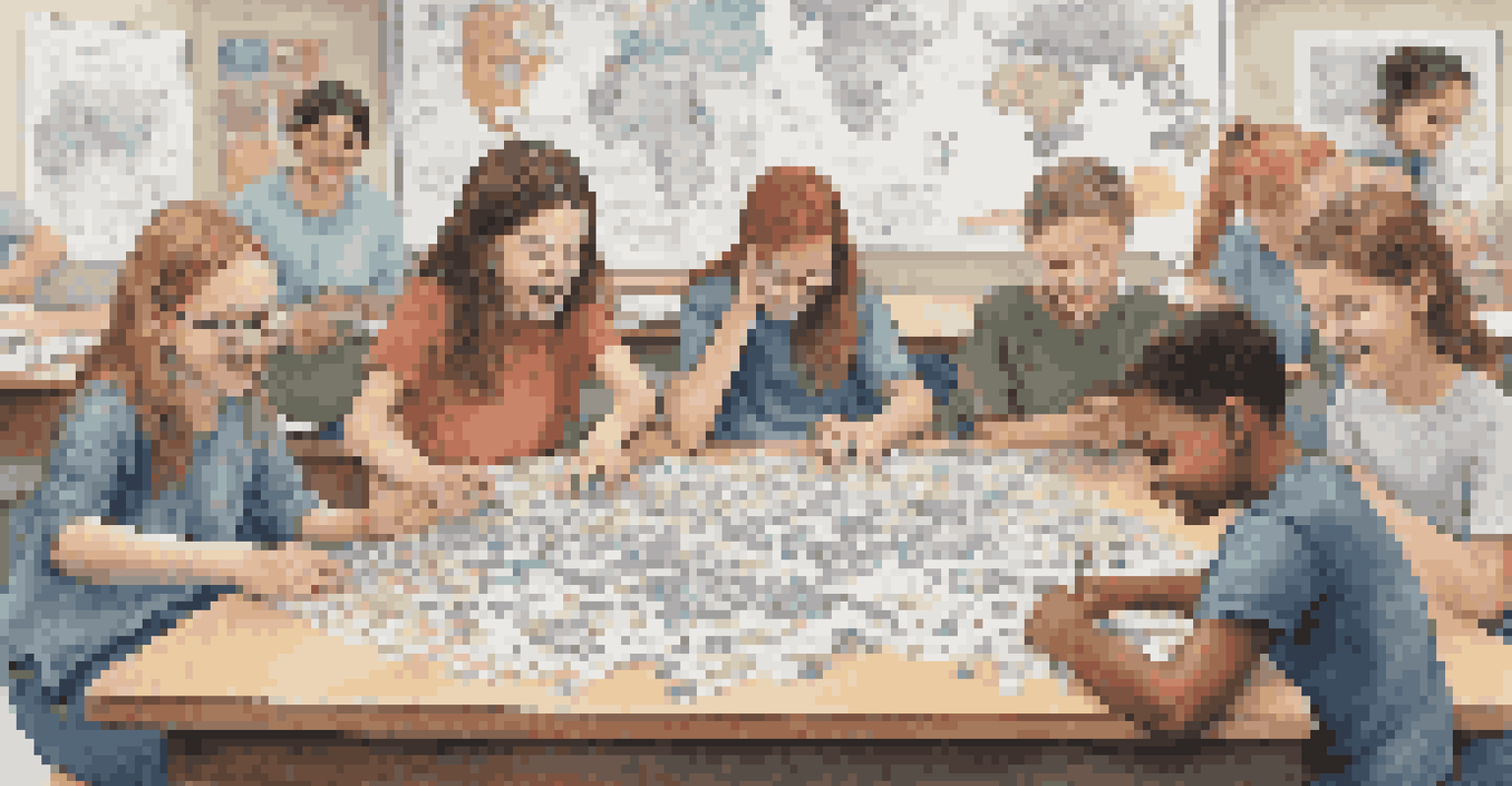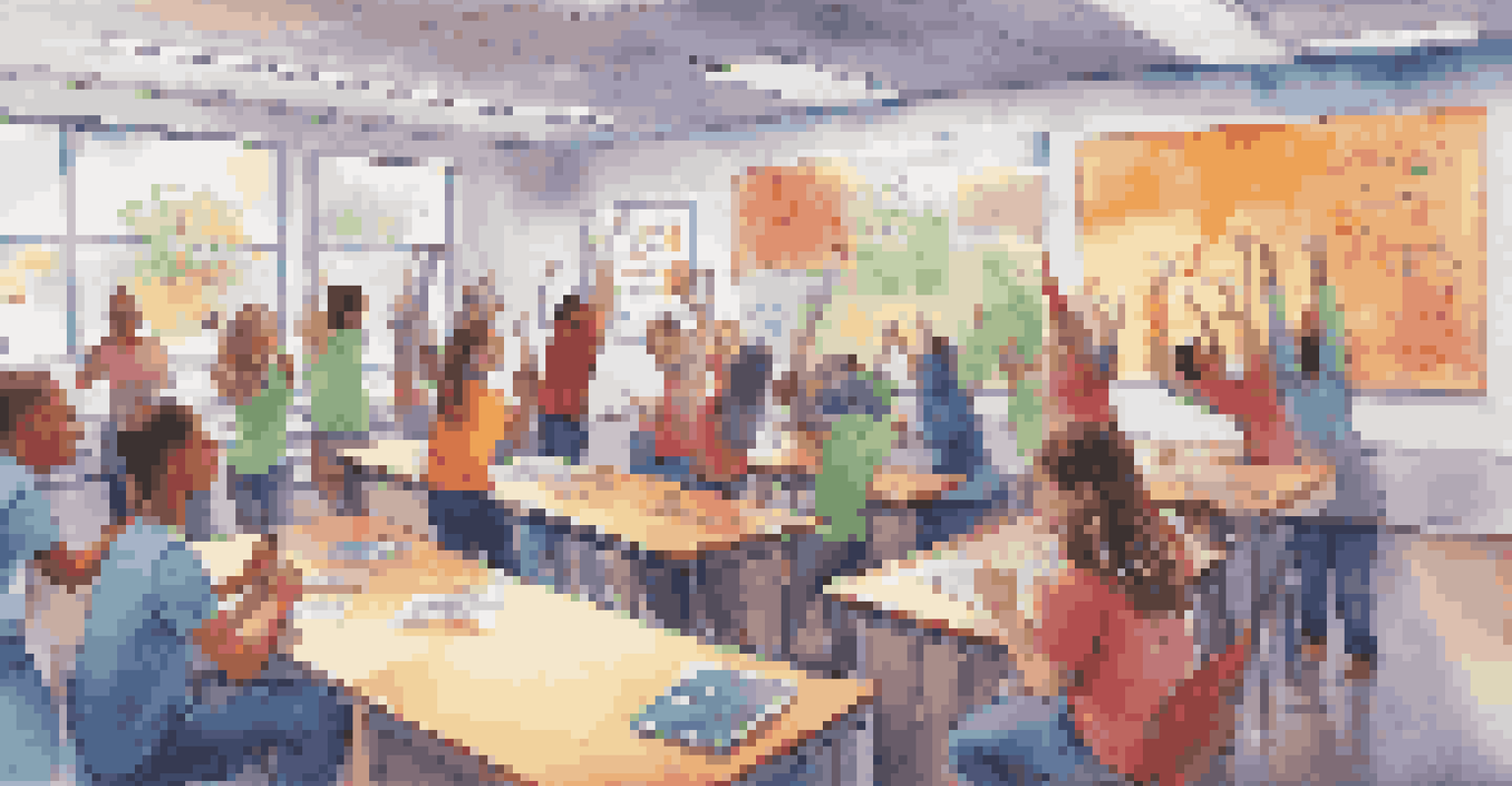Collaborative Learning Techniques for Enhancing Engagement

Understanding Collaborative Learning and Its Benefits
Collaborative learning is an educational approach where students work together to achieve shared learning goals. This method not only fosters teamwork but also enhances critical thinking skills, as learners navigate through problems collectively. By engaging with diverse perspectives, students can deepen their understanding and retention of material, making learning a more enriching experience.
Collaboration allows teachers and students to share their ideas and work together to improve learning outcomes.
One of the standout benefits of collaborative learning is its ability to increase student engagement. When learners collaborate, they're more likely to feel invested in the learning process, as they are part of a community rather than isolated individuals. This sense of belonging can boost motivation and enthusiasm, leading to a more vibrant classroom environment.
Moreover, collaborative learning prepares students for real-world situations where teamwork is essential. By practicing skills such as communication, negotiation, and conflict resolution, learners become better equipped for future challenges. In essence, this approach not only enhances academic performance but also cultivates essential life skills.
Incorporating Group Projects for Deeper Learning
Group projects are a classic example of collaborative learning that can significantly enhance engagement. These projects require students to work together to research, plan, and present their findings, thus promoting accountability and shared responsibility. When students contribute their unique strengths, the final product often reflects a richer understanding of the subject matter.

Additionally, group projects encourage effective communication among peers. Students have to articulate their ideas clearly and listen actively to their teammates, which helps build crucial interpersonal skills. This interaction not only fosters relationships but also creates a dynamic learning atmosphere where ideas can flourish.
Collaborative Learning Enhances Engagement
Working together fosters a sense of community, increasing student motivation and investment in their learning.
However, successful group projects require clear guidelines and expectations. Instructors should provide a structure that outlines roles, deadlines, and assessment criteria. This clarity helps minimize confusion and ensures that all group members are on the same page, leading to a more productive collaboration.
Utilizing Peer Teaching to Enhance Understanding
Peer teaching is another powerful collaborative learning technique that can enhance engagement and comprehension. In this setup, students take on the role of both teacher and learner, explaining concepts to their peers. This process reinforces their own understanding while also helping others grasp challenging material.
The whole is greater than the sum of its parts.
One of the main advantages of peer teaching is that it allows students to learn at their own pace. When a peer explains a concept, it often resonates more than traditional instruction. This relatable approach can demystify difficult topics and promote a more inclusive learning environment.
Moreover, peer teaching builds confidence among students. As they step into a teaching role, they gain a sense of ownership over the material. This empowerment can motivate them to engage more deeply, not just in teaching but also in their own learning journey.
Implementing Think-Pair-Share for Active Participation
Think-Pair-Share is a simple yet effective technique that encourages active participation in the classroom. It begins with students thinking about a question individually, then pairing up to discuss their thoughts before sharing with the larger group. This method promotes critical thinking and ensures that all voices are heard.
The beauty of Think-Pair-Share lies in its versatility. It can be applied across various subjects and topics, making it a valuable tool for any educator. Through this technique, students not only engage with the material but also learn from each other's perspectives, enriching their educational experience.
Group Projects Foster Accountability
Group projects promote shared responsibility, allowing students to leverage their unique strengths for a richer understanding.
Furthermore, this strategy helps to alleviate the pressure some students feel when speaking in front of the entire class. By first discussing their ideas with a partner, they gain confidence and clarity, making it easier to contribute to the larger discussion. This gradual approach to participation can lead to a more inclusive and engaging classroom atmosphere.
Creating Jigsaw Groups for Diverse Learning Experiences
Jigsaw groups are a collaborative learning strategy where each member becomes an 'expert' on a specific topic before teaching it to their peers. In this setup, students first work in their 'expert' groups to master their assigned section, and then they regroup to share their knowledge. This not only promotes accountability but also enriches the learning experience through diverse perspectives.
The jigsaw technique encourages students to rely on one another, fostering a sense of interdependence. Each member plays a crucial role in the group's success, which can enhance motivation and engagement. This shared responsibility also cultivates a supportive learning environment where students feel valued and empowered.
Moreover, jigsaw groups can cater to various learning styles. By allowing students to explore topics in depth and then share their insights, this method appeals to both visual and auditory learners. Ultimately, the jigsaw approach not only deepens understanding but also makes learning a fun and collaborative adventure.
Gamification: Boosting Engagement Through Play
Gamification involves integrating game-like elements into learning activities to boost engagement. By incorporating challenges, rewards, and competition, educators can create a more dynamic and interactive classroom experience. This approach taps into students' natural inclination for play, making learning feel less like a chore and more like an enjoyable activity.
Games can serve as powerful collaborative learning tools. When students work together to achieve a common goal in a game, they develop teamwork and communication skills. Plus, the excitement of competition often encourages students to participate more actively, leading to a deeper investment in their learning.
Reflective Practices Boost Insight
Encouraging students to reflect on their collaborative experiences deepens their understanding of teamwork and personal contributions.
However, it's essential to strike a balance between fun and educational value. While gamification can enhance engagement, it should not overshadow the learning objectives. By thoughtfully integrating games that align with curriculum goals, educators can create an engaging and effective learning environment.
Reflective Practices: Enhancing Collaboration Insight
Incorporating reflective practices into collaborative learning can significantly enhance student engagement. After group activities, asking students to reflect on their experiences encourages them to think critically about their contributions and interactions. This reflection not only solidifies their learning but also fosters a deeper understanding of teamwork dynamics.
Reflection can take various forms, such as journal entries, group discussions, or feedback forms. These activities allow students to articulate their thoughts and feelings about the collaborative process, highlighting what worked well and what could be improved. This practice cultivates a growth mindset, encouraging students to view challenges as opportunities for development.

Moreover, reflective practices can help educators assess the effectiveness of their collaborative strategies. By gathering insights from students, teachers can identify successful techniques and areas needing adjustment. This ongoing reflection ensures that collaborative learning remains a dynamic and responsive process, ultimately enhancing student engagement.